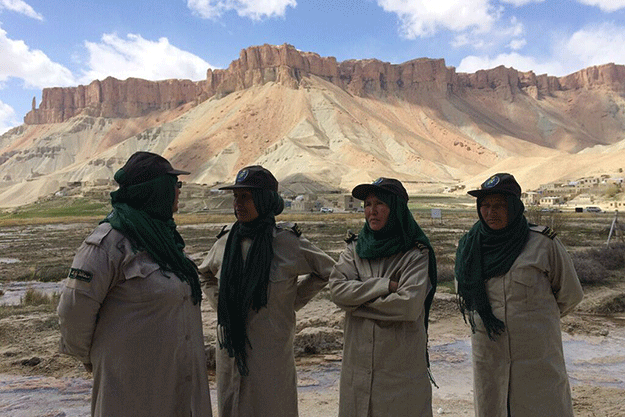
Once a popular stop on the 1960s hippie trail, Band-e-Amir Park and the now destroyed Buddhas of Bamiyan rarely see foreign tourists anymore.

PHOTO: AL JAZEERA
Years of war and destruction following the Soviet invasion of Afghanistan in 1979 and the rise of the Taliban have made these stunning sites a dangerous place to visit.
However, as the country slowly moves to rebuild itself, rangers have been trained to protect the park and carry out conservation work.

PHOTO: AL JAZEERA
Fatima, Kubra, Nikbakht, and Sediqa are the park's first and only female wardens. Their responsibilities include assisting local tourists, teaching children about conservation and ensuring visitors do no harm to the park.

PHOTO: AL JAZEERA
Declared a national park in 2009, Band-e-Amir is made up of six azure blue mineral lakes surrounded by stunning cliffs and is home to wildlife such as the Persian leopard, ibex, urials as well as the Afghan snow finch.
The park stretches over 570 square kilometres and is located on the Hazarajat Plateau in the mountainous Hindu Kush.

PHOTO: AL JAZEERA

PHOTO: AL JAZEERA

PHOTO: AL JAZEERA

PHOTO: AL JAZEERA
This article originally appeared on Al Jazeera























COMMENTS
Comments are moderated and generally will be posted if they are on-topic and not abusive.
For more information, please see our Comments FAQ